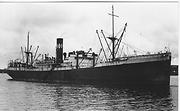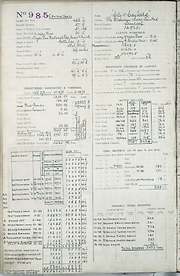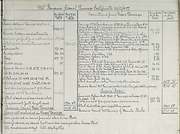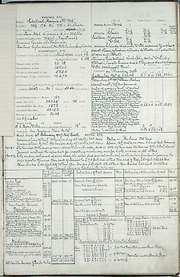 Hartlepool Sports & Leisure
Hartlepool Sports & Leisure
- Cinemas, Theatres & Dance Halls
- Musicians & Bands
- At the Seaside
- Parks & Gardens
- Caravans & Camping
- Sport
 Hartlepool Transport
Hartlepool Transport
- Airfields & Aircraft
- Railways
- Buses & Commercial Vehicles
- Cars & Motorbikes
- The Ferry
- Horse drawn vehicles
 A Potted History Of Hartlepool
A Potted History Of Hartlepool
- Unidentified images
- Sources of information
- Archaeology & Ancient History
- Local Government
- Printed Notices & Papers
- Aerial Photographs
- Events, Visitors & VIPs
 Hartlepool Trade & Industry
Hartlepool Trade & Industry
- Trade Fairs
- Local businesses
- Iron & Steel
- Shops & Shopping
- Fishing industry
- Farming & Rural Landscape
- Pubs, Clubs & Hotels
 Hartlepool Health & Education
Hartlepool Health & Education
- Schools & Colleges
- Hospitals & Workhouses
- Public Health & Utilities
- Ambulance Service
- Police Services
- Fire Services
 Hartlepool People
Hartlepool People
 Hartlepool Places
Hartlepool Places
 Hartlepool at War
Hartlepool at War
 Hartlepool Ships & Shipping
Hartlepool Ships & Shipping

City of Canberra Technical Specification
| Length (feet) : | 453.0 |
| Breadth (feet) : | 57.9 |
| Depth (feet): | 31.10 |
| Gross Registered Tonnage (g.r.t.) : | 7297 |
| Net Registered Tonnage (n.r.t.) : | 4689 |
| Engine Type : | T.3 cyl 25¾, 37½-54 & 78½ -54 265lb 984nhp |
| Engine Builder : | CMEW Hartlepool |
| Additional Particulars : | Special quality steel-refrigerated ship. Completed December 1927; Official No. 149651: Code Letters GNLD |
Related items :
 City of Canberra - Trial
City of Canberra - Trial
FOR ELLERMAN LINES.
S.S. CITY OF CANBERRA OFFICIAL SEA TRIALS.
Northern Daily Mail. 12/12/27
The s.s. City of Canberra, built by Messrs. William Gray and Co., Ltd., to the order of the Ellerman Lines, successfully ran her official sea trials on Friday.
The vessel has two decks with poop, bridge, and forecastle and is of the following dimensions: Length B. P., 453feet; breadth, extreme, 57ft. 9in., depth moulded, 34ft. 6 in.; draft, 28ft. 0 1/2 in. Her total deadweight is about 10,800 tons, giving a cargo capacity of 658,000 cubic feet. She has a designed speed of 14 knots which will enable her to maintain 13 1/2 knots at sea. She is fitted with a cruiser stern and special attention has been given to the planning of her cargo gear which is on the modern lines, and includes 16 winches and 18 derricks. The design has been so arranged as to provide for the accommodation of the most bulky cargo. Insulated space is fitted in the forward ‘tween decks to enable her to deal with perishable cargo. The vessel is fitted with a specially designed deep-tank and fore peak for the carriage of edible oils and other liquid cargo and special arrangements have been made to keep this class of cargo in perfect condition and to facilitate discharge on arrival at destination.
The design of the hull embodies the most modern practice, being built on the “fore and aft girder” principle with special widely spaced supporting columns, thus providing exceptionally clear holds and ‘tween decks which practically eliminate broken stowage. In order to obtain the maximum deadweight on given dimensions, special high tensile steel has been utilized largely in her construction.
Accommodation for the officers and engineers is provided amidships on the bridge deck whilst the crew is housed in the poop. There is also roomy accommodation provided for twelve passengers.
The machinery
The machinery, supplied by the Central Marine Engineering Works of the builders, consists of reciprocating engines of the balanced quadruple expansion inverted direct acting surface condensing type, having cylinders arranged in line fore and aft, working on four cranks, the diameter of the cylinders being 25 ¾ -37 ½ - 54- 78 inches by 54 inches stroke.
There are four main boilers each working at the high pressure of 265lbs per square inch and fitted with forced draught, steam superheated to about 560 deg. F., and special air-heaters by means of which the air supply to the furnaces is preheated to about 300 deg. F. The boilers are designed to burn either oil or coal, the former being carried in double bottom tanks, and the forward piping being carried through a duct keel.
A number of steamship auxiliaries of the well known “C.M.E.W.” type are also fitted, including, general service pump, centrifugal circulating pump driver by a compound steam engine, harbour feed pump, auxiliary condenser, ballast pump, high pressure feed heater, evaporator, etc.
The owners were represented on the trial by Mr. Wm. Hinchcliffe, Mr J. Allan, Mr. G. C. Gourlay, Capt. K. MacDonald, and Mr. H. Venables.
 City of Canberra on the stocks
City of Canberra on the stocks
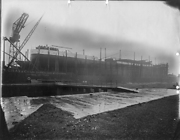 Donated by Hartlepool Museum Service
Donated by Hartlepool Museum ServiceDated 1927
Steamship City of Canberra on the stocks at Gray's Central shipyard in 1927.
More detail »




